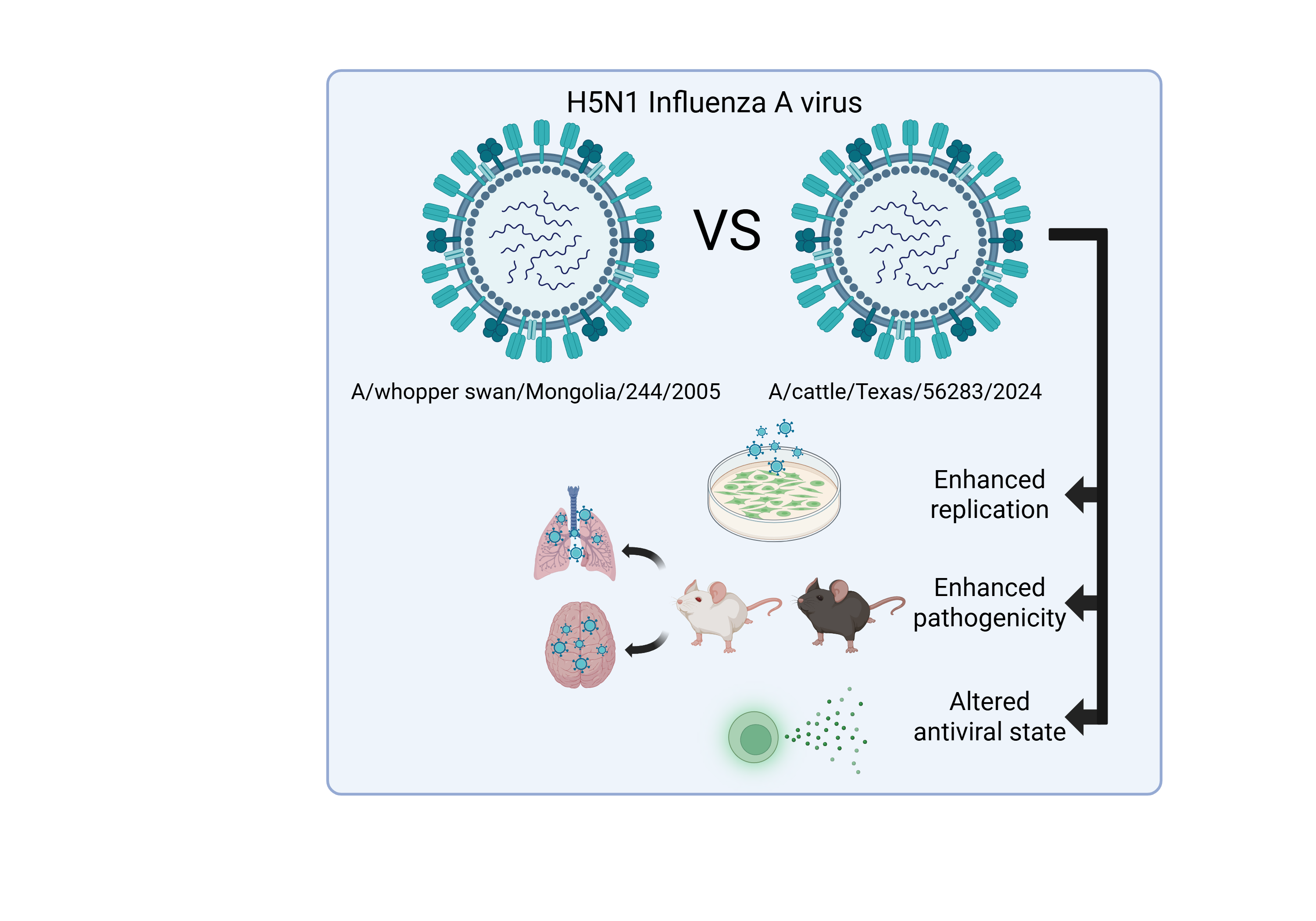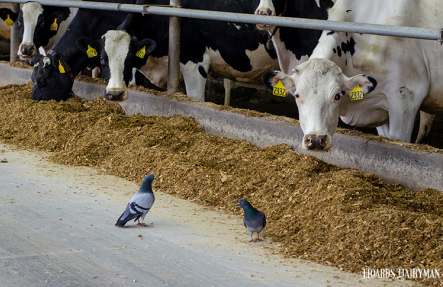Influenza viruses are the cause of the most devastating pandemics in history. The world recently experienced an outbreak of the H5 bird influenza. The virus has now expanded into different species, including dairy cattle. The economic impact of the outbreak is difficult to quantify. Around seventy human cases have been diagnosed with the most recent H5 bird flu virus in US with one death registered. There has been no evidence of person-to-person spread and the current public health risk in considered low (H5 Bird Flu: Current Situation | Bird Flu | CDC). However, Influenza viruses are constantly changing microorganisms. They combine the genetic material with other poultry viruses, a Darwinian characteristic to gain survival advantage.

Surveillance is one of the measures to counteract such a constantly changing organism. One of the strategies to surveil these viruses is to test the replication and invasive capabilities of the virus in live hosts. In collaboration with UTMB One Health, Cassio Octaviani and team (2) aimed to characterize the properties of one of the most recent Texas H5 isolates from dairy cattle as compared with a historical avian isolate from Mongolia. With an almost 20-year gap and originating from distinct clades, the two isolates offer optimal conditions for examining viral evolution.

Considering that this is a virus causing serious respiratory illness, what would you do first to compare the pathogenicity of the two isolates? The authors decided to start by studying the virus replication in different human cell lines in vitro. The cattle isolate showed 100-fold higher replication in several cell lines. Also, the disease progressed rapidly in intranasally infected mice even at low viral doses, and its invasive capabilities were heightened following infection with the cattle isolate, exhibiting clear and rapid tropism for brain tissue and associated damage. The authors then conducted a clever experiment: they spiked raw cow milk with the different viruses and administered it orally to mice, then proving the high pathogenicity also by the digestive route. Interestingly, the virus seems to act slower by the digestive route, showing delayed mortality. Finally, they proved that the mice infection with the cattle virus induce an immune state resembling a “cytokine storm” in the lung and brain. These mice also show signs of evasion of the RIG-I-like receptors, crucial components of the innate immune system’s response to viral infections.
Octaviani and colleagues are now focusing in developing a vaccine against H5 since seasonal influenza vaccines offer limited protection against this strain. They also want to characterize the H5N1 virus that caused the only fatality in the States during this outbreak. Would it even have a greater pathogenicity compared to the Texas cattle Isolate? Only experimentation would give us an answer. Incessant characterization of the virus, in a sort of time-lapse photography of nature behavior is key to impeding the catastrophic consequences seen in other times with Influenza viruses for human, animal and environment wellbeing.
References:
1. H5 Bird Flu: Current Situation | Bird Flu | CDC
2. Octaviani CP, Huang P, Bi-Hung P, Gray GC, Tseng CK. Superior replication, pathogenicity, and immune evasion of a Texas dairy cattle H5N1 virus compared to a historical avian isolate. Sci Rep. 2025 Mar 14;15(1):8797. doi: 10.1038/s41598-025-93493-5. PMID: 40087358; PMCID: PMC11909106.
